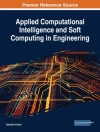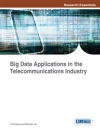JPEG2000 Standard for Image Compression presents readers with the basic background to this multimedia compression technique and prepares the reader for a detailed understanding of the JPEG2000 standard, using both the underlying theory and the principles behind the algorithms of the JPEG2000 standard for scalable image compression. It introduces the VLSI architectures and algorithms for implementation of the JPEG2000 standard in hardware (not available in the current literature), an important technology for a number of image processing applications and devices such as digital camera, color fax, printer, and scanners.
Table of Content
Preface.
1. Introduction to Data Compression.
2. Source Coding Algorithms.
3. JPEG–Still Image Compression Standard.
4. Introduction to Discrete Wavelet Transform.
5. VLSI Architectures for Discrete Wavelet Transforms.
6. JPEG 2000 Standard.
7. Coding Algorithms in JPEG 2000.
8. Code Stream Organization and File Format.
9. VLSI Architectures for JPEG 2000.
10. Beyond Part 1. of JPEG 2000.
Index.
About the Authors.
About the author
TINKU ACHARYA, Ph D, is Chief Science Officer and Senior Executive
Vice President of Avisere, Inc., Tucson, Arizona, and an adjunct
professor in the Department of Electrical Engineering at Arizona
State University, Tempe, Arizona. With seventy-four U.S. patents,
fourteen European patents, and more than fifty patents pending,
Professor Acharya has been recognized as Intel Corporation’s
‘Most Prolific Inventor’ in 1999 and 2001 worldwide and for five
consecutive years (1997–2001) in Arizona. He has published
three books and more than sixty papers in the area of multimedia
computing.
PING-SING TSAI, Ph D, is Assistant professor in the Department of
Computer Science of the University of Texas-Pan American, in
Edinburg, Texas. He has published more than twenty journal and
conference papers, holds thirteen patents, and has five patents
pending.












